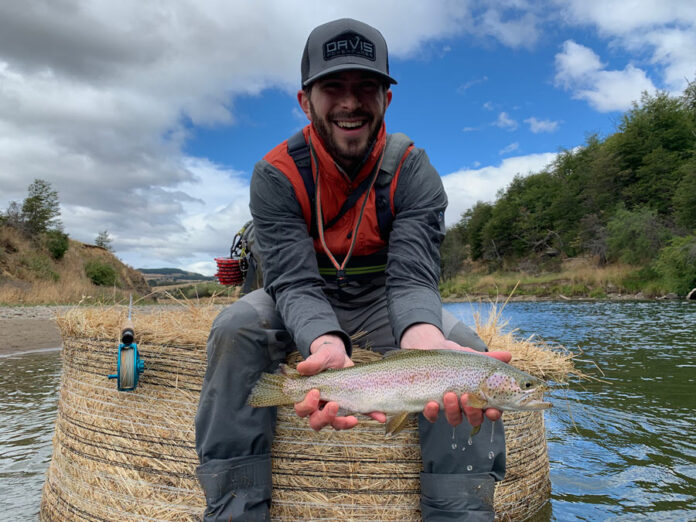Written by: Seth Berger, Orvis Fly Fishing Travel Specialist
All photos courtesy Seth Berger
My Recipe for Adventure has all the classic elements that compose a memorable fly-fishing experience: an exotic locale, mystery, and a bit of dumb luck.
Have you ever been in a familiar situation, and then all the sudden see
something so out of place that your mind starts to race, working to understand
what it could be? That’s exactly what happened to me while I was wading in a
canyon in central Patagonia near Coyhaique, Chile, a few years back.

I was hosting a group trip at Orvis-endorsed Magic Waters Patagonia. One
day, after breakfast, a few customers and I set off with two guides to fish the
upper Simpson River. To get there, we had to drive through a farmer’s cattle fields,
opening and closing cattle gates along the way. We parked high above the river,
rigged our rods, and made the dusty hike into the canyon. As we switch-backed
down the canyon wall-the speargrass brushing against our waders–we eyed riffles
and pools up and down the river. Our excitement grew. Once we reached the
bottom of the canyon, half the group headed upstream, while the rest of us fished
downstream.

We crisscrossed the emerald-green pools to get downstream. As we turned
a corner, I could see two enormous shapes, with perfectly flat tops, in the
water. My initial thought was that they were boulders, but that couldn’t be
right. I stared at them as we walked closer, my brain going into overdrive trying
to figure out what they were. I was stumped. Finally, once we were about 50
yards away, I realized what they were. Two massive bales of hay were sitting in
the middle of a huge pool like rocks, flat side up. The legendary high winds of
Patagonia had blown them from a nearby field into the river. You know what hay
bales look a lot like? A casting platform.

We carefully made our way to the platforms, inadvertently donated by
local farmers. We waited quietly, studying the water. A single fish was on the
far side of the river, picking off nymphs and occasionally rising. My first
plan was to use the hay bale to hide my presence as I made some casts, but the
feeding trout was just too far away. Logically, the next step was to utilize the
hay bale as a casting platform. I slowly crept up on top, trying to stay low,
and made a cast. The fish moved to my fly but ignored it as it drifted by. I changed
flies and cast again. Same result.

What could I do? I couldn’t waste this opportunity, so I
opened my fly box for inspiration. Then it hit me: the Evil Betsy. I had
been introduced to this caddis-style fly by a customer on the same trip, the
year before. I don’t recall the reasoning behind the name, but my gut told me
that she would be the fly. I tied on a size 14 and made a cast. I gave the fly
a twitch as it hit the water, and then let it dead drift. I saw the fish as it
slid to its left, rose, and gently took the fly.

This wasn’t the biggest fish of the trip, buy you can tell
from my smile that it was one I wouldn’t soon forget. After the day of fishing,
we headed back to the lodge. As is tradition, we were greeted with the local
cocktail, a Pisco Sour. We sat around the fireplace and swapped our fishing
tales from earlier in the day as well as from other travels, near and far.

Seth Berger is an Orvis Fly Fishing Travel Specialist. Look for an upcoming blog post on how to tie the Evil Betsy.
Credit: Source link






























